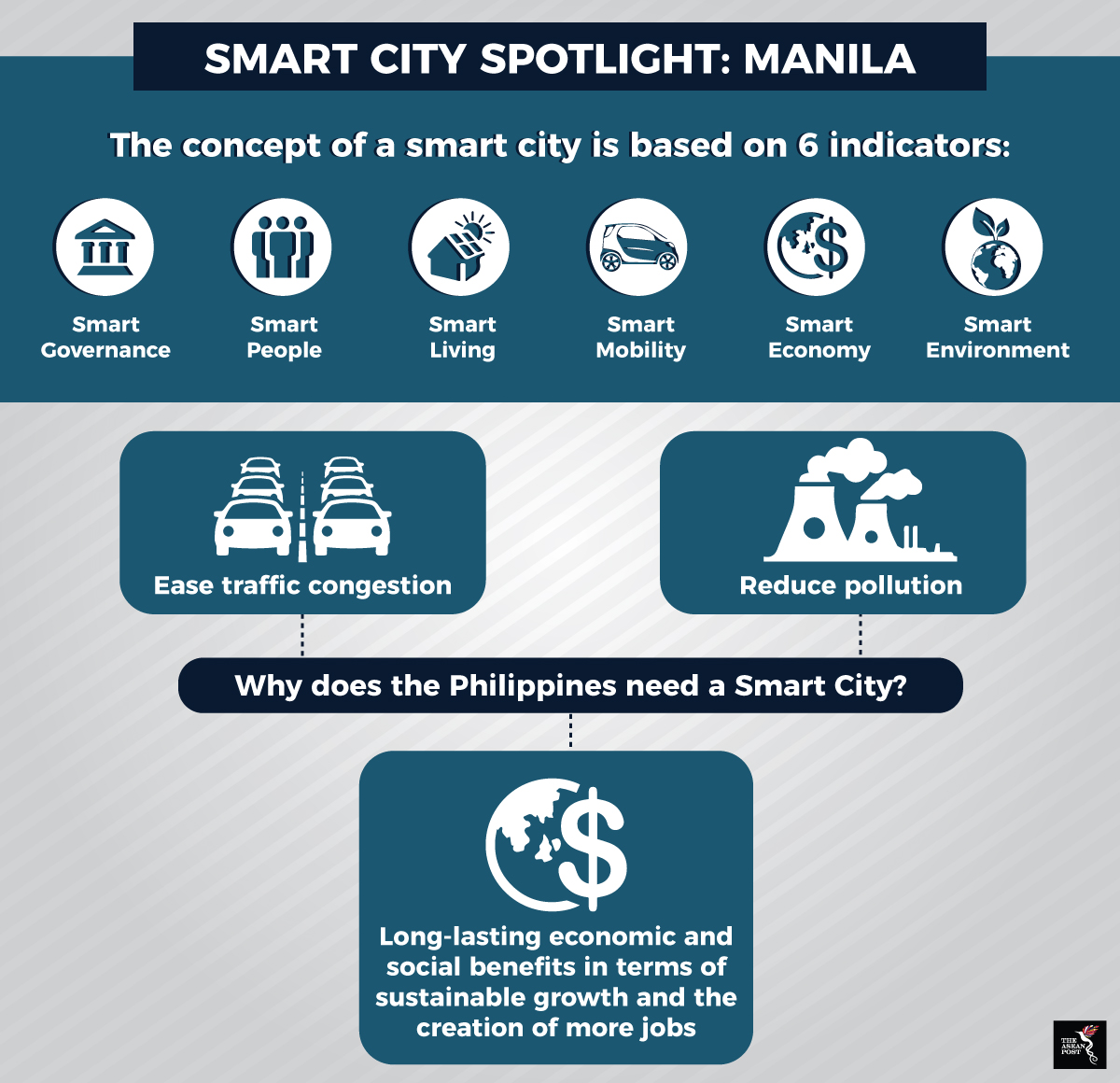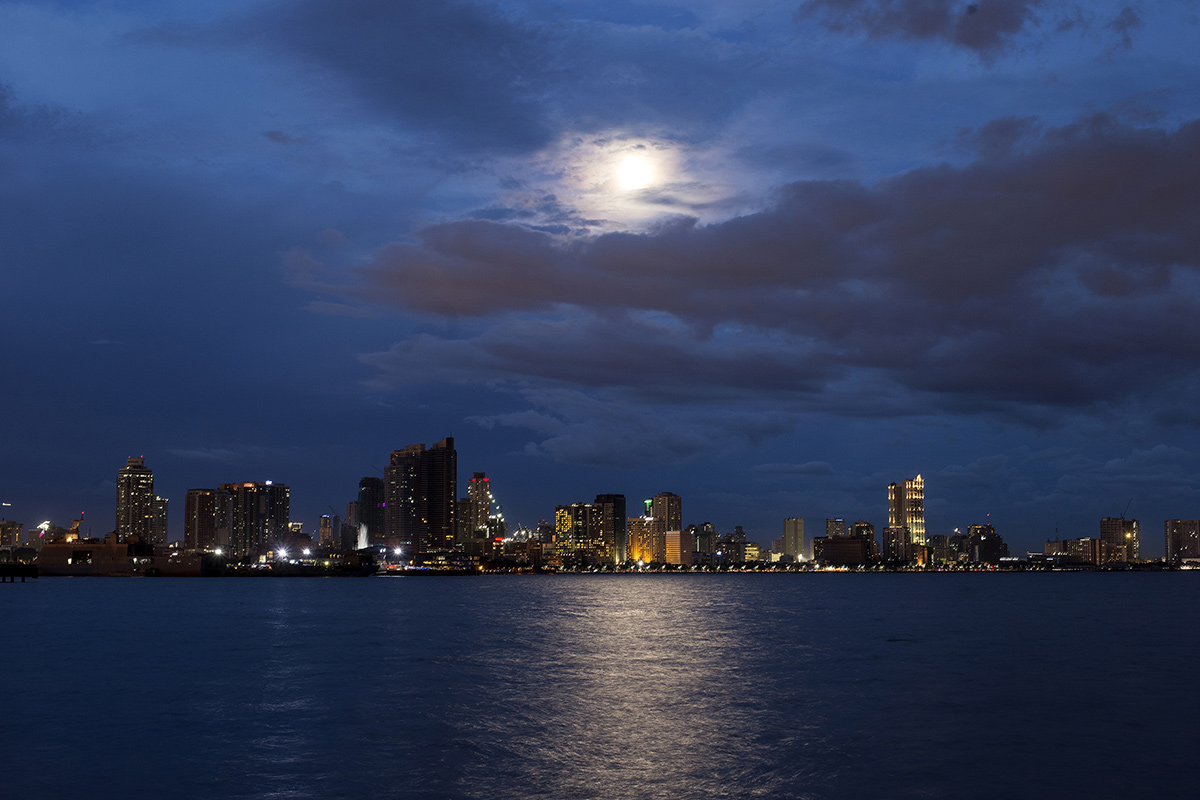The capital of the Philippines; Manila is the world’s most densely populated city with 42,857 people per square kilometre. The Metro Manila population is estimated at 12 million, but the larger urban area has a population of approximately 21.3 million. As such, traffic congestion in Manila is notorious with a report by Waze revealing that drivers in the capital are the most dissatisfied in the world after the Dominican Republic and El Salvador. With so many people moving about in one location, there is no doubt that the scale to which carbon footprints are emitted is enormous. As such, there is a need for change and that change is set to be introduced under the ASEAN Smart Cities Network or (ASCN) initiative.
At its most fundamental, a Smart City is an urban area that applies various types of electronic data collection sensors to manage its assets and resources efficiently. The goal of such a city is to optimise functions and drive economic progress while simultaneously improving the quality of life of its citizens by means of smart technology. Manila, Cebu, and Davao are among 26 Southeast Asian cities selected as pilot cities under the ASEAN Smart Cities Network (ASCN) initiative. This decision was made at the recently concluded 32nd ASEAN Summit in Singapore.

Source: Various sources
While not exactly located in Manila, the New Clark City is a massive project in line with the Philippines’ aspirations of creating a Smart City. This metropolis of the future is planned in Central Luzon, approximately 120 km from Manila. The New Clark City will be a ‘twin city’ to Manila, easing congestion in the hyper-dense capital. Furthermore, the project is expected to house up to 2 million people and contribute US$30 billion to the Philippines’ economy on an annual basis.
“New Clark City has tremendous potential, and we are committed to be long-term partners in the city’s growth,” said Surbana Jurong Group CEO, Wong Heang Fine. Surbana Jurong is a Singapore-based urban, industrial, and infrastructure consulting firm that signed an agreement with the Philippines’ Bases Conversion and Development Authority (BCDA) and Japan Overseas Infrastructure Investment Corporation for Transport and Urban Development (JOIN) to develop the city.
For President Rodrigo Duterte, decentralising the Philippines’ economy and shifting government ministries away from Manila is a crucial domestic policy plan. In a speech made last year, Duterte had warned that the capital, which is currently home to 13 million people, could become a ‘dead city’ within 25 years. Thus, the creation of a Smart City is even more justified.
Approximately 1 million people in the capital work for the government, adding to traffic congestion that is both, time consuming and stressful. A study by the 2014 International Cooperation Agency pointed out that traffic congestion alone costs the Philippine economy about US$48 million a day in lost productivity. This figure is projected to escalate to US$114 million per day by 2030.
The New Clark City is being promoted as a ‘smart, green, and disaster-resilient’ community and future capstone of Duterte’s ‘Build, Build, Build’ infrastructure spending spree worth US$162 billion. Projected to be bigger than Manhattan, the Smart City will cover approximately 94.5 kilometres and is scheduled to be completed in 2022. One of the highlights of the project is the construction of the 106-kilometre Manila-Clark Railway project that links it to the capital. This will inevitably make travelling to the heart of the metropolis quick, comfortable, and convenient. In addition, the local economy is expected to benefit from this development with new jobs being created.
The Smart City project is an initiative that is expected to bring a series of benefits to Manila and the people who call it home. The ever-present conundrum of traffic congestion will be eased - limiting pollution and reducing time wastage - to increase productivity at the workplace.
